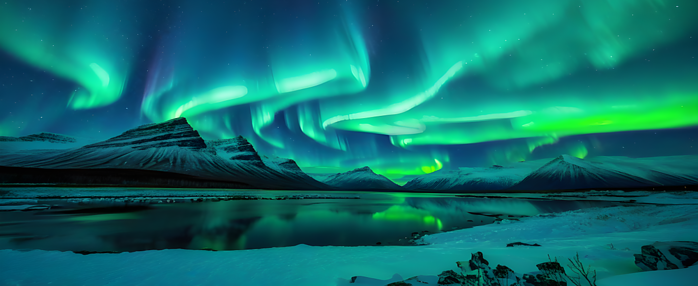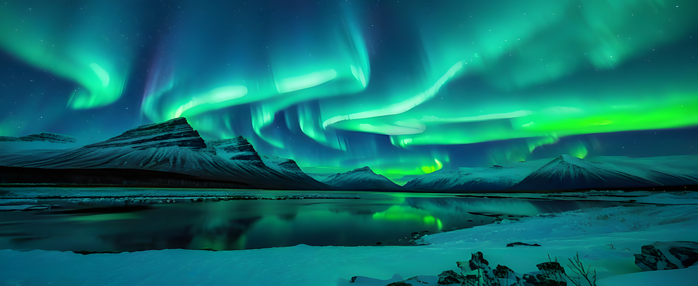
AI-generated image of northern lights. Note. Image generated with the prompt “Image of The Northern Lights” by Freepik, 2023
I imagine you’ve looked at images of the Aurora Borealis and been struck by its beauty. These luminous natural phenomena, known as the Northern Lights, have captivated onlookers for millennia. In this article, I delve into the radiant world of the auroras, taking you from their historical appeal to the hard science that explains their existence.
Humans were amazed by the auroras long before they knew what caused them. Ancient Norse texts described the lights as the glittering armor of Valkyrie, while some Indigenous peoples believed they were the spirits of ancestors. Regardless of the interpretation, the Northern Lights are significant in many cultures.
Scientifically speaking, the Northern Lights are a spectacle not just of mythology but of the intricate dances between energy, particles, and our planet’s defenses. So, what exactly are the Northern Lights? At their core, they’re a natural light display predominantly spotted in high-latitude regions, linked directly to activity from the sun.
In the next section, I’ll explain precisely how solar activities commence the breathtaking ballet of lights called the Aurora Borealis. We are understanding the complex process of how the Northern Lights form deepens our appreciation and connects us more to our solar system and the forces at play.
The Celestial Dance: How the Northern Lights Form
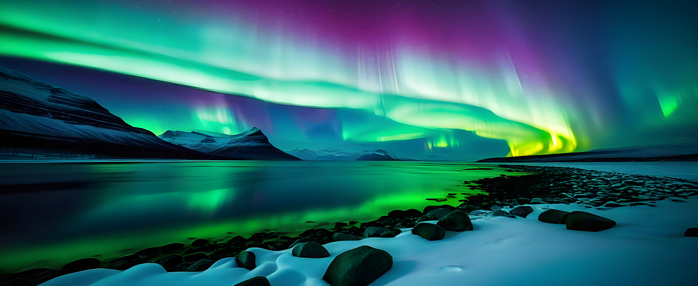
AI-generated image of northern lights. Note. Image generated with the prompt “Image of The Northern Lights” by Freepik, 2023
The Northern Lights, also known as the Aurora Borealis, are not just a delightful spectacle; they result from complex interactions in Earth’s magnetosphere. It all starts about 93 million miles away from the Sun. Our star is a vortex of nuclear reactions, sending charged particles like protons and electrons hurtling into space. This continuous flow of particles is known as the solar wind.
When these charged particles from the Sun reach Earth, they’re drawn towards the magnetic poles by our planet’s magnetic field. The Earth’s magnetosphere, an invisible shield, guides these particles to the upper atmosphere.
The magic happens here: as these charged particles collide with gases like oxygen and nitrogen in our atmosphere, they transfer their energy to the gas molecules. The molecules get ‘excited,’ meaning they jump to a higher energy state. This process occurs typically at altitudes of 80 to 300 kilometers, in the thinnest parts of our atmosphere.
After the excitement, the molecules return to their normal state, and in doing so, they emit excess energy in the form of light. This light is what we see as the shimmering curtains of color in the night sky. Gasses emit different colors: oxygen gives us green and red, while nitrogen imparts blue and purple hues.
It’s also worth noting that the color we see can be influenced by the type of particle collision and the altitude at which it occurs. Green, the most common aurora color, appears up to 150 miles in altitude. Red auroras are rarer and occur at higher altitudes, while purple and blue occur at lower altitudes.
A common myth is that the Northern Lights only occur during certain seasons but always happen. The darkness of the polar winter and the clarity of the skies make the lights visible to the human eye.
Now, with an understanding of how these lights form, one can truly appreciate the experience of witnessing them. In the next section, I’ll share practical advice on maximizing your chances of seeing this incredible display.
Chasing the Lights: Best Practices for Experiencing the Aurora
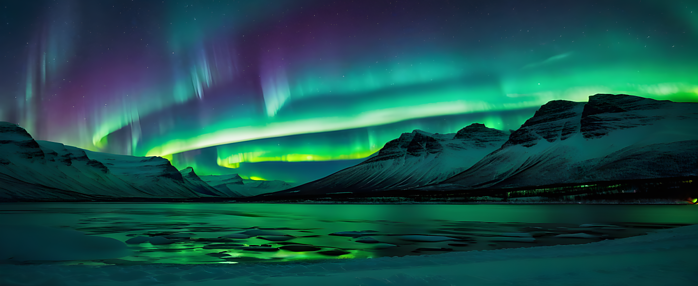
AI-generated image of northern lights. Note. Image generated with the prompt “Image of The Northern Lights” by Freepik, 2023
Planning is essential if you’ve ever dreamed of witnessing the Northern Lights. The location and timing of your adventure significantly impact the likelihood of a memorable experience. Aim for geographic areas with high latitudes; places like Norway, Iceland, Canada, and Alaska offer some of the most vivid displays due to their proximity to the poles.
Timing is your next consideration once you’ve set your sights on a destination. The Northern Lights are seasonal, with the most activity occurring from late September to early April. The nights are long and dark during these months, providing a perfect canvas for nature’s light show. To maximize your chances, plan your trip around the equinoxes in March and September, when solar activity tends to be stronger.
When it comes to clothing, don’t underestimate the cold. Dress in layers with thermal wear as the base, and invest in a high-quality insulated jacket, snow pants, gloves, and a warm hat. Your comfort can make or break the experience. Remember, you might be waiting outdoors for several hours.
For those who wish to capture the auroras, photography requires preparation. A camera capable of manual settings, a sturdy tripod, and some practice with nighttime shots are crucial. Use a wide-angle lens to encompass the vastness of the night sky and set a slow shutter speed to allow enough light in. Batteries tend to drain quickly in cold weather, so bring extras.
Lastly, patience is your faithful companion when chasing the Northern Lights. Displays can be unpredictable, and you should be prepared for the potential of several attempts before a successful sighting. As nature has its schedule, embrace the opportunity to connect with the serene arctic environment as you wait for the skies to dance.
The Future of the Northern Lights: Climate Change and Space Weather
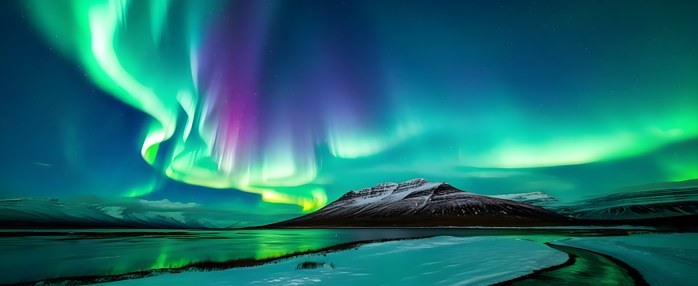
AI-generated image of northern lights. Note. Image generated with the prompt “Image of The Northern Lights” by Freepik, 2023
As I conclude this exploration of the Northern Lights, I find it’s essential to look ahead. The auroras are a spectacle and a delicate feature of our planet’s relationship with the sun. Research suggests climate change could influence this relationship – although it’s not fully understood how. Some scientists speculate that weather patterns and the earth’s magnetic field shifts might alter where and how often the lights are seen.
Space weather, which includes phenomena like solar flares and geomagnetic storms, plays a crucial part in the aurora’s intensity. With the sun’s activity following an 11-year cycle, peak periods of the Northern Lights correspond with solar maxima. As we approach the current cycle’s maximum, expected within the next few years, watchers of the sky are likely to be rewarded with more frequent and vivid displays.
Monitoring these changes is vital. Organizations around the globe are already on this task, employing satellites and ground-based observatories to track space weather. This data isn’t just for predicting the Northern Lights; it’s critical to safeguarding technologies like satellites and power grids from solar-induced disruptions.
Ultimately, the dance of the Northern Lights across our skies reminds us of our solar system’s dynamic and interconnected nature. It stands as a symbol of the beauty and complexity of the natural world. This phenomenon beckons our curiosity and demands respect for the delicate balance that sustains it. By keeping an eye on the night sky and the progressing science, we ensure that this celestial performance continues to inspire and educate future generations.
For additional blog posts, please visit:
Northern Lights Shutter Tech – Capture the Magic Gear & Expertise

